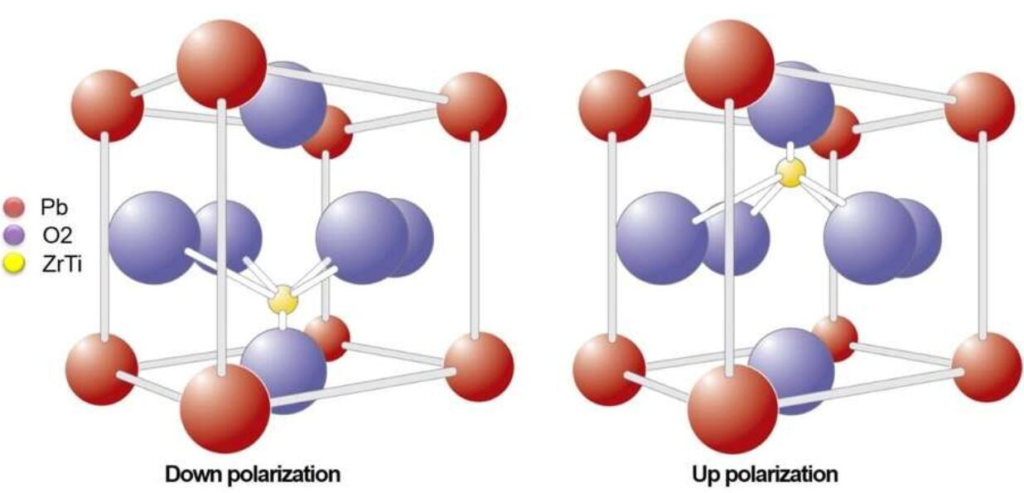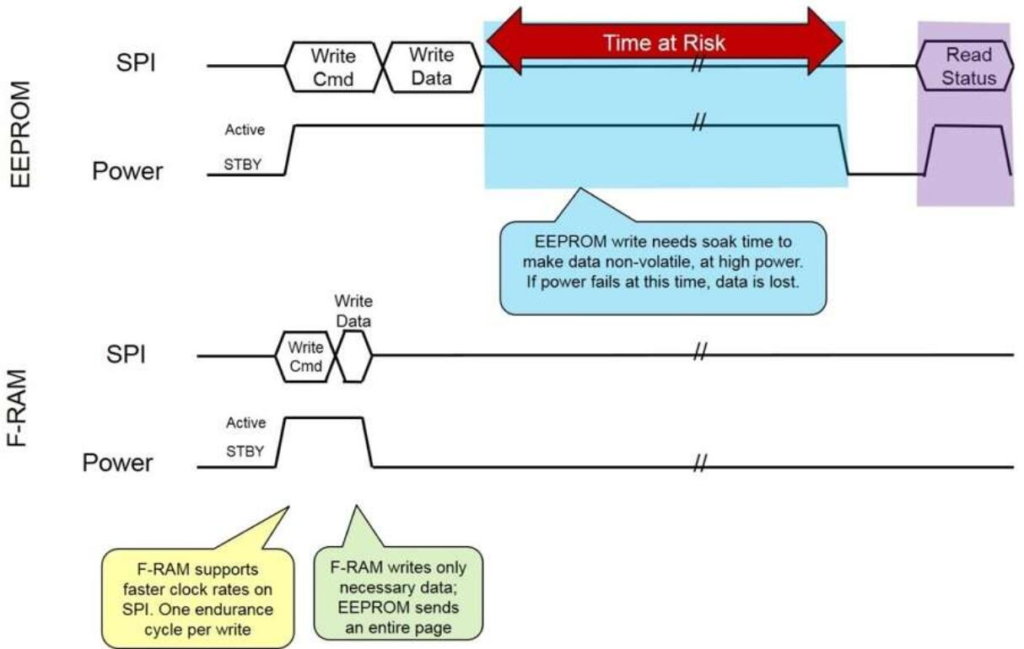FRAM memory offers instant write capability, unlimited endurance and near-zero soft error rates to support compliance with functional safety standards. Interest in FRAM non-volatile memory technology for automotive EDRs has been aroused because its use addresses these drawbacks.
These attractive properties are the result of the ferroelectric properties of lead zirconate titanate (PZT), one of the materials that has a chalcogenide crystal structure with a cation in the center (see Figure 1). The cation can be in one of two positions and the position can be switched by applying an electric field. Each switch produces a “switching charge” (Q s), which can be read to indicate a logical 1 or 0.

Figure 1: FRAM stores data by polarization of the ferroelectric material PZT. (Source: Cypress Semiconductor)
The operation of ferroelectric memory is completely different from the operation of conventional writable non-volatile memory derived from floating gate technology, which works by storing electrical charge in bit cells.
Flash or EEPROM memories use a charge pump to generate a high voltage (10 V or higher) on the chip and force the charge carriers through the gate oxide. This produces long write delays and requires high write power, which is destructive to the memory cell.
In contrast, the write speed of FRAM is virtually instantaneous – just a few picoseconds. Because of the short duration, the write operation can be powered by the inherent capacitance of the FRAM memory chip.
This means that once the data is supplied to the device’s pins, it is guaranteed to be stored even if the system power fails, and no capacitors or any other external power source is required. The instant write speed also means that no cache SRAM or DRAM memory is required on the board (see Figure 2).

Figure 2: FRAM’s fast write speed protects critical data that can be lost when using EEPROM devices. (Source: Cypress Semiconductor)
The ferroelectric principle also has unlimited endurance. For example, cypress Semiconductor’s Excelon-Auto FRAM memory device is rated for 100 trillion write cycles. This is enough to allow it to record data every 10 µs for 20 years without the need for sophisticated wear-leveling software.
An effective automotive EDR implementation will pair infinitely durable FRAM devices with 2 Mb or 4 Mb densities and high density flash memory. The memory will typically be configured to continuously store the latest 1 to 5 s of data, while the flash array is used for bulk storage of older data.
For Excelon-Auto devices, there is a serial peripheral interface which uses standard non-volatile commands for configuration as well as read and write operations.
Reviewed and edited by Qing Liu

